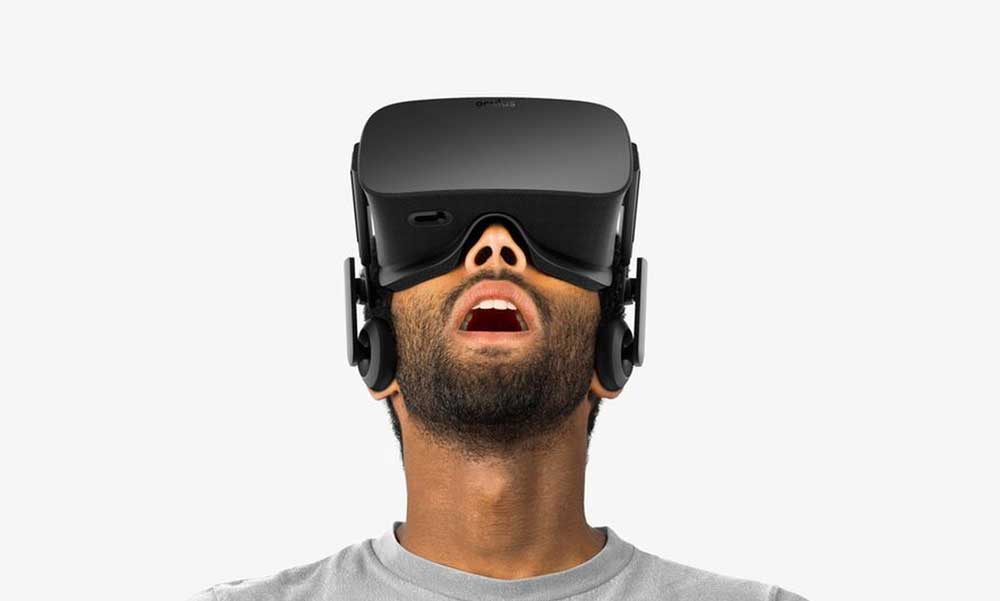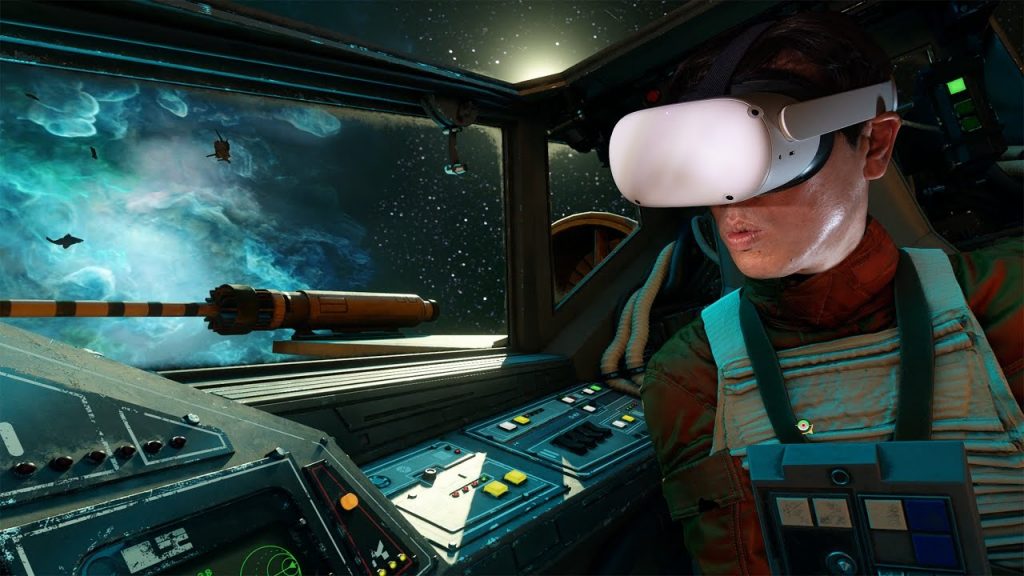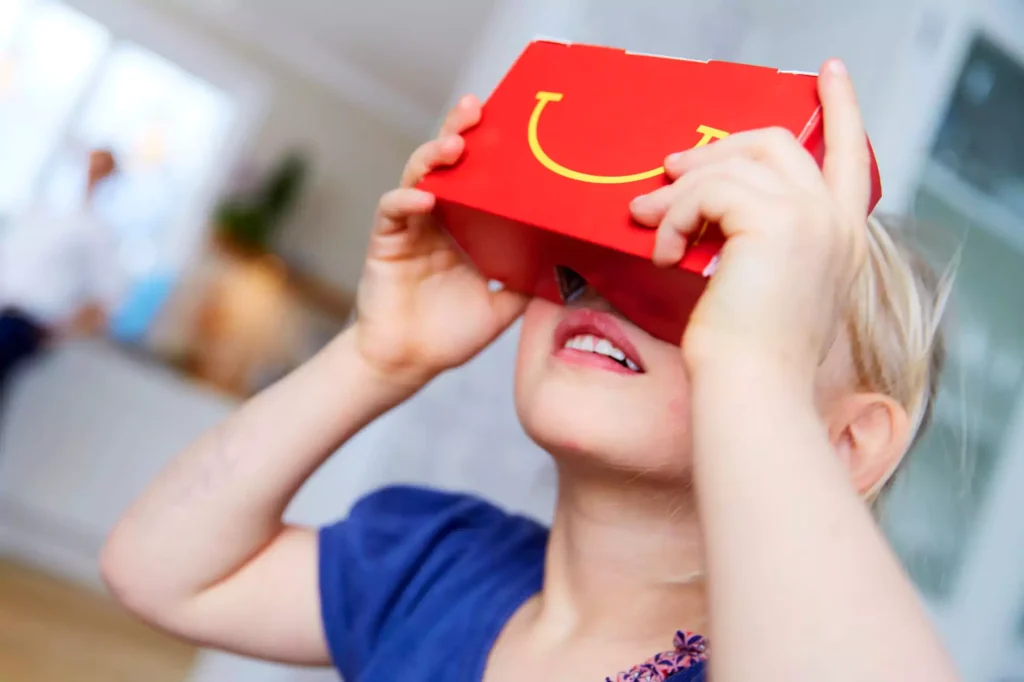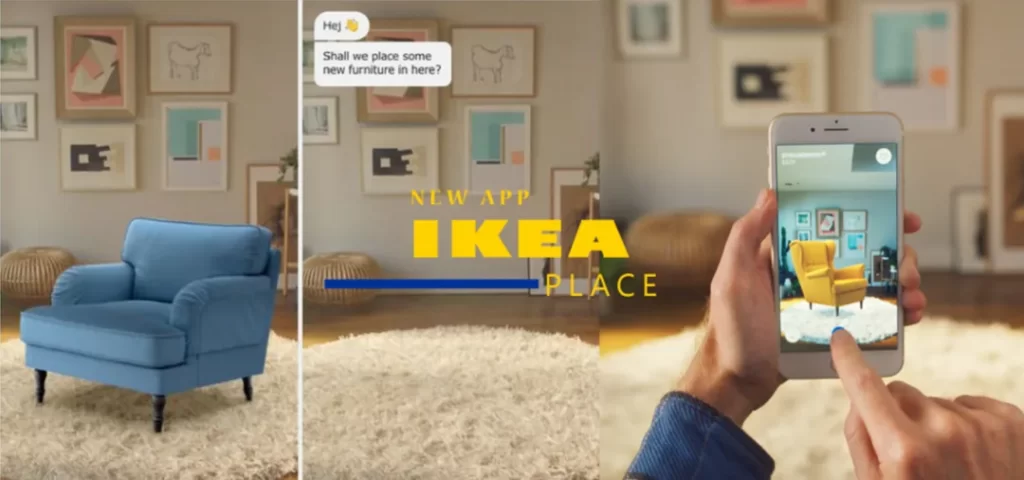VR Content Marketing: The Future is Immersive
From Oculus Rift to Google Cardboard, virtual reality (VR) has captured the imaginations of consumers and marketers alike. As VR technology becomes more advanced and affordable, businesses have an exciting opportunity to reach customers in immersive new ways.
Table of Contents
An Introduction to the Cutting-Edge Concept of VR Content Marketing

But what exactly is VR content marketing? Simply put, it involves creating compelling 3D/360-degree content to connect with audiences and promote products or services. Whether transporting someone to the African savannah or placing them courtside at an NBA game, VR content provides unparalleled sensory experiences that engage users.
As Simon Fouquart, Director of Digital Marketing at Porsche, notes:
“Virtual reality technology brings opportunities that enable us to tell the Porsche brand and product stories in a way that goes far deeper than ever before.”
Unlike traditional 2D content, VR marketing aims to make audiences feel genuinely present. This sense of immersion can increase brand awareness, educate customers, and drive conversions in bold new ways.
Current Statistics on VR Adoption
- Over 22 million VR headsets were sold globally in Q3 2023 alone.
- 72% of people feel more connected to brands after a VR experience
- 55% of customers are more likely to purchase after watching branded VR content
With many industry experts predicting rapid growth, savvy marketers who embrace VR content early will have a competitive advantage. This article will explore best practices to help you incorporate cutting-edge VR into your marketing strategy.
Top Benefits of Using VR Content to Captivate Customers

1. VR Content Drives Unmatched Engagement
Imagine prospecting customers could teleport into a 3D showroom to browse products, walk through detailed building plans, or go behind the scenes of production facilities. VR gives audiences active agency, allowing them to explore areas of interest up close and personal.
According to tech pioneer Robert Scoble:
“I've never seen a media as impactful at changing minds as virtual reality. It's that powerful.”
Because VR demands attention and feels like an event unfolding, it can keep visitors enthralled longer. Whether showcasing your organisation’s culture or the problem-solving value of an offering, VR storytelling makes customers care more.
2. VR Boosts Learning and Information Recall
VR content helps audiences absorb and retain information better thanks to rich spatial details and interactions. Studies show people remember:
- 75% more watching a VR presentation vs 2D video
- 400% more from VR training compared to desktop tutorials
So beyond just capturing eyeballs, VR content marketing educates in stickier ways. Customers better understand products, gain skills, and recall details that may influence future purchasing.
3. VR Content Converts Sales More Effectively
After memorable VR encounters, hot sales prospects don’t just walk away untouched. 79% of those reporting outstanding VR experiences feel more optimistic about the company.
Part of VR’s secret sauce is activating multiple senses to influence behaviour, unlike reading a blog or watching an ad. As Harvard studies revealed, sensory inputs can have powerful effects on decision-making.
So, rather than relying solely on verbal persuasion, savvy VR marketers let customers discover appealing attributes for themselves. Direct VR product trials frequently demonstrate superior conversion results.
4 Ways to Harness VR Content Marketing

The creative possibilities span as far as the imagination, but applying VR content marketing typically falls into four main buckets:
1. Immersive Brand Content
Transport audiences into cinematic brand stories using VR. Driving emotional resonance and excitement, these experiences build relationships by highlighting company values, community initiatives, founding stories, or employee profiles:
- TOMS Shoes – Immerse fans in giving missions to Peru, introducing shoe drop recipients with empathy
- Charity Water – Show 360 scenes of projects funded by donations, making donors feel closer to the mission
- Airbnb – Feature apartment VR tours led by local guides that convey an authentic cultural flavour
2. Interactive Product Demonstrations
Nothing substitutes for direct first-hand product evaluation. VR unlocks game-changing try-before-you-buy potential. Shoppers enjoy manipulating 3D models from all angles rather than relying on static images. They glean practical insights that may convince them to purchase:
- Furniture brands – Room planner apps helping people visualise pieces in their actual space
- Automotive companies – Option to sit inside ultra-luxury car interiors and inspect details
- Makeup brands – Augmented reality mirrors to test virtual lipstick shades and styles
3. Immersive Brand Education
VR’s memorable educational impact means marketers can teach customers far more effectively. Brands may create workshops, masterclass tutorials, or simulations. VR training lifts knowledge retention from boring PDFs or videos. Being an active learner simply sticks out better.
Potential applications include:
- Software companies – Immersive demos of new features rather than just screenshots
- Food brands – Host interactive virtual cooking classes led by celebrity chefs
- Financial services – Let prospects practice advisor meetings or market investing simulators
4. Unique Live Events & Experiences
Move tired trade show booths into the future with riveting VR spectacles. Or orchestrate exclusive virtual launch parties and galas for VIP audiences. Experiment with innovative techniques like gamification contests, social media filter unlocks, or branching choice narratives.
Go where flat webcasts could never reach. Consider a few ideas:
- Movie studio pre-release screenings in futuristic VR cinemas
- Luxury fashion shows let anyone attend from front-row seats
- Video game launches inviting fans to join immersive gameplay reveals
With a headset or phone, prospects inhabit compelling worlds that exceed expectations.
Best Practices for Creating Captivating VR Content
You may be trying to grab customers' eyeballs with the abovementioned techniques, but hold on! Like any medium, quality VR content requires understanding the landscape's unique quirks and capabilities. Walk before you can run with these tips:
Hook Viewers Quickly
Since sessions often last under 10 minutes, avoid verbosity and make first impressions count. Identify the core story or messages and drop audiences directly into the heat of the action. Longwinded buildups diminish engagement.
Guide Attention Clearly
Unlike flat webpages, VR users can look wherever they want – including away from crucial info! Master visual flow with intentional cues: characters that gesture where to focus next or arrows/lighting highlighting points of interest.
Remember Audio’s Importance
With arresting virtual scenery everywhere, it's easy to underestimate audio. Yet nuanced spatial sounds clue viewers, set moods like tension or joy and trigger emotional reactions. 40% of the brain handles audio processing, so make it count!
Respect Accessibility Requirements
Ensure VR encounters remain accessible and compliant with left- or right-handed modes, text cue alternatives for deaf and hard-of-hearing visitors, accommodations for vestibular disorders, and captions.
Avoid Distracting Frictions
Clunky tech experiences sabotage immersion fast. Latency lags from tracking delays, poor video buffering, equipment fitting issues, UI complexities, or playback failures all shatter the illusion. Streamline for fluid user journeys.
Budget Significant Time for Post-Production
It’s not just filming VR scenes. The editing process also takes vastly longer than standard video. Allow ample scheduling for finicky steps like metadata tagging, stitching angles into 360 scenes, colour correcting inconsistencies, adding layers of the spatial audio, final rendering, QC testing, and troubleshooting.
VR Marketing Campaign Examples

Marriott Travel Brilliantly Campaign
Marriott pioneered VR content in the travel industry with its 2015 Travel Brilliantly campaign. Partnering with Framestore VR Studio and Relevent, Marriott filmed a family enjoying a vacation at their resort properties. The 4D, 360-degree experience lets viewers feel like they were actually on the trip, sparking booking interest.
McDonald’s VR Happy Meal Box
McDonald’s developed an ingenious VR Happy Meal box to promote nutrition transparency for kids. The special package is folded into a VR viewer, which lets kids take a virtual tour behind the scenes to see how chicken McNuggets and other favourites are made. This helped young fans learn about food sourcing while boosting positive brand associations.
Charity Water First-Person Fundraiser
Non-profits have also capitalised on VR with Charity Water’s notable Google Cardboard project. The fundraiser video put donors directly inside a new well project in Ethiopia, told from a child’s viewpoint. This emotionally charged perspective generated 20% higher fundraising results by intimately connecting donors with cause outcomes.
Guinness Basketball VR Experience
Alcohol brands like Guinness also effectively leverage VR by tying it to consumers’ passion points. Their 360-degree basketball challenge connected America’s love of hoops with skill-based gaming to bring pub excitement home. With over 11 million views, it became one of the hottest VR projects on YouTube.
Lowe’s Holoroom Augmented Virtual Reality Design Lab
Home improvement giant Lowe’s has taken customer experience even further with augmented and virtual reality. Their Holoroom lets DIYers take products for a virtual test drive before buying, even customising solutions digitally. This has fueled greater customer confidence in product selection and performance.
Emerging Opportunities on the VR Horizon

Like the early web, VR medium still has plenty of room for maturation. But even as tech hurdles lower, creative marketers can start capitalising now with some up-and-coming trends:
- Volumetric Video – Photoreal 3D model recordings of humans rather than static CG avatars make for more natural interactions
- Haptics – Early haptic gloves, vests, or shoes incorporating touch feedback lend physical connection missing from visuals alone.
- Artificial Intelligence – AI that automatically tags 3D objects or generates interactive narrative stories will accelerate production
- AR/VR Convergence – Blending augmented reality magic could overlay digital effects onto real-world scenes for a best-of-both mashup
And one day, innovations like neural interface headsets or omnidirectional treadmills may erase today’s immersion limits!
Let Your Imagination Soar Into VR Experiences
Despite some lingering adoption hurdles, VR content marketing flaunts incredible promise for boosting engagement, conversions, and customer hyper-targeting. Early adopters who dive in gain valuable experience while harnessing exclusive audience mindshare.
Yet, ultimately, to unleash this field’s full disruptive impact, marketers must first transcend traditional tactics. Playing safely within legacy boxes neuters potential. VR demands wholly fresh thinking – where the only limits exist within our minds.
With courage and visionary zeal, creative brands can explore new virtual frontiers that make customers fall head over heels. The time is now to start brainstorming and get those VR headsets cracking!
FAQs About VR Content Marketing
What equipment do I need to create VR content?
You’ll need a 360-degree camera rig or photogrammetry setup for film and VR-capable post-production editing software. Many third-party production studios offer end-to-end creative services, too.
Does VR content work well with other marketing?
Yes! Blend VR initiatives into multi-channel campaigns across web, mobile, email, social advertising, SEO, and live events for expanded exposure. Repurpose 2D cuts of VR films if needed.
How much does high-quality VR content cost to produce?
From freelance marketplaces to full-scale agencies, prices vary greatly. But expect significant investments for longer, intricate productions with custom interactivity. Costs drop as you standardise and scale.
What’s better – 180 VR or 360 VR?
180 VR focuses action in front of users, so it works well for stories. 360 VR surrounds to showcase spaces but demands more production effort. Evaluate goals, then choose appropriately.
How can I track VR content performance?
Platform analytics tools help gauge consumption metrics like completion rates, session times, dropout points, areas viewed most, etc. Survey VR participants for direct qualitative feedback, too.
